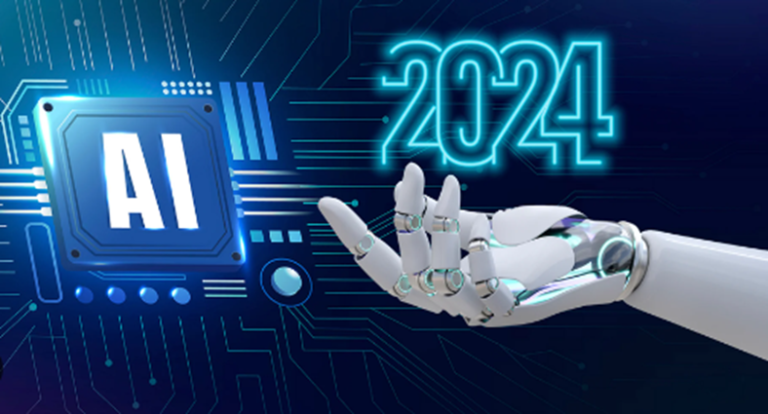What’s New in Real-Time CGI for Live Broadcasts?
Real-time CGI (computer-generated imagery) is revolutionizing live broadcasting. This technology provides dynamic images during live events. These advances are altering the way viewers see live programming. Recent improvements make broadcasts more entertaining and interactive.

Increased Processing Power
Processing power has improved tremendously in recent years. Modern GPUs (Graphics Processing Units) can swiftly process complex graphics. This enables real-time CGI integration without delays. Broadcasters may now create high-quality images instantaneously. This makes live broadcasts more visually engaging.
Enhanced Rendering Techniques
Rendering techniques have also improved. Ray tracing is now available in real time. This approach produces realistic lighting and shadows. The end effect is more realistic CGI during live broadcasts. These upgrades allow the images to mix perfectly with real footage.
AI-Driven CGI
Artificial intelligence (AI) is playing an important role in CGI. AI can create realistic animations and effects rapidly. It also helps to automate difficult activities, decreasing the need for manual labor. AI-powered CGI is becoming increasingly frequent in live sports and events. This technique injects energy and visual appeal into broadcasts.
Virtual Sets and Backgrounds
Virtual sets are becoming popular in live broadcasting. These sets have the purpose of replacing traditional actual backgrounds. Real-time CGI generates entirely unique environments. Broadcasters may change the scene immediately without making real adjustments. Virtual sets also save space and save production expenses.
Augmented Reality (AR) Integration
Augmented Reality (AR) is being included in real-time CGI. AR adds digital aspects to the actual environment. This technology improves live broadcasts with dynamic graphics. Sports broadcasters frequently use augmented reality to present numbers and player information. Viewers get a richer, more informational experience.
3D Graphics and Holograms
3D graphics are increasingly easy to include in live broadcasts. Real-time CGI enables detailed 3D models and animations. Holograms are also more frequent. These 3D projections convey a sense of existence and reality. They are particularly popular in musical performances and award ceremonies.
Improved Motion Capture
Motion-capture technology has evolved tremendously. Real-time CGI can now precisely reproduce human motions. This technology is utilized during live concerts and events. Actors can perform while their CGI avatars are displayed on screen. The finished effect is a smooth combination of live action and computer animation.
Real-Time Character Animation
Character animation is getting more dynamic during live broadcasts. Real-time CGI enables characters to interact with live events. These animated figures may react to audience participation. This results in a compelling and participatory experience for spectators.
Virtual Reality (VR) and CGI
Virtual Reality (VR) is also improving live broadcasting. VR environments are built using real-time CGI. Audiences may immerse themselves in these simulated spaces. This technology is often used in eSports and concerts. VR improves live broadcasts into immersive experiences.
Cross-Platform Integration
Real-time CGI is currently available on different platforms. Broadcasters can distribute CGI-enhanced material via television, the internet, and mobile devices. This guarantees that visitors have a consistent experience across all devices. Cross-platform connectivity is vital for reaching a larger audience.
Interactive Audience Participation
Live broadcasts are growing more engaged with their audiences. Real-time CGI enables people to control the images. Polls, voting, and social media interaction can alter the on-screen graphics. This amount of involvement keeps viewers’ attention across the show.
Real-Time Data Visualization
Data visualization is crucial in sports and news broadcasts. Real-time CGI makes it possible to display live data dynamically. Graphs, charts, and statistics update instantly during the broadcast. This provides viewers with real-time information, enhancing their understanding.
Automated CGI Production
Automation improves CGI production for live broadcasts. AI technologies may produce and control CGI features automatically. This lowers the need for personal involvement at live events. Automated CGI creation makes live broadcasts simpler and more economical.
Real-Time Weather Graphics
Weather broadcasts are benefiting from real-time CGI advancements. Broadcasters can now display detailed weather patterns and simulations. Real-time updates ensure that the information is accurate. Viewers get a clearer understanding of weather conditions.
CGI in Live Sports Analysis
Sports analysis is becoming more detailed with real-time CGI. Broadcasters can break down plays and strategies visually. CGI replays show angles and perspectives not seen during the game. This adds depth to sports commentary and analysis.
Seamless CGI Integration
The seamless integration of CGI into live footage is now practical. Modern composing techniques guarantee that CGI pieces merge seamlessly. This removes the distracting effect of extra images. The final effect is a better and more competent broadcast.
Cost Reduction and Accessibility
Developments in real-time CGI are reducing production costs. The technology is becoming more accessible to smaller broadcasters. Affordable software and hardware are now available. This democratizes high-quality CGI, allowing more creators to use it.
Customization and Branding
Broadcasters may now create CGI features to reflect their brand. Logos, colors, and themes are simply integrated. Real-time CGI guarantees that these aspects are constant throughout broadcasts. This improves brand identity and audience awareness.
Real-Time CGI in News Broadcasts
News broadcasts are utilizing real-time CGI for storytelling. Complex news topics are explained with dynamic visuals. This makes the information easier to understand. Real-time CGI is also used for live reporting from remote locations.
Future of Real-Time CGI
The future of real-time CGI in live broadcasts seems bright. Ongoing advances will increase the innovation’s power. AI, VR, and AR will have significant effects on future advancements. Broadcasters will be able to provide more engaging and interactive content.
In conclusion
As real-time CGI evolves, the possibilities for live broadcasts expand rapidly. These innovations will have an impact on media and entertainment in the future. Real-time CGI is transforming live broadcasting. The change has been driven by advances in AI, AR, VR, and motion capture. Modern technology is making broadcasts more interesting and visually pleasing.






